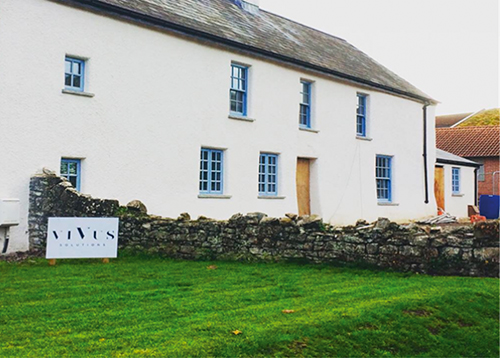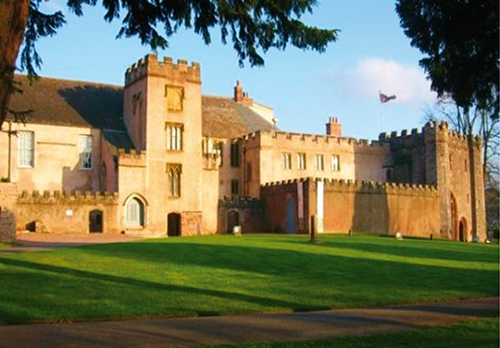Does hydraulic lime always give us the result we want?
 When talking about the use of lime, the ‘conversation’ regarding hydraulic sets must have been going on for millennia – ever since, in fact, lime mortar became a thing. Here, Harry Cursham of Vivus Solutions Ltd postulates that hydraulics aren’t all that they seem:
When talking about the use of lime, the ‘conversation’ regarding hydraulic sets must have been going on for millennia – ever since, in fact, lime mortar became a thing. Here, Harry Cursham of Vivus Solutions Ltd postulates that hydraulics aren’t all that they seem:
"Where the local limestone contains clay minerals inter alia, the lime made from it will naturally have some hydraulic properties – it is not possible to get away from that basic scientific truth. The temperature of the burn does also have an effect: hotter leads to more efficient hydraulicity; cooler (less energy) leads to less efficient hydraulicity. An interesting correlation to our modern-day efforts to reduce greenhouse gases!
"I propose, however, that it was not necessarily that hydraulic set that was wanted – at least in the way modern materials are used. Burn the lime; hydrate it; use it. It must be that simple – or is it?
"In the UK and across the continent we find that early mortars are relatively soft, with an almost spongy consistency. That includes most structures from the earliest times right up until the 19th century – irrespective of the purity of the local limestone. I do have to point out that this is a rule of thumb and is not absolute. The Romans, for instance, experimented with using their hydraulic sets in a stronger manner, but not always – and certainly not for everything. It’s a complicated subject!
"It seems that hydraulic mortars were being used in ways that negated their hydraulic properties. Indeed, in those early mortars a set based on water content, compression, aggregates, drying and carbonation (air set) would have been achieved with a mortar made from an impure limestone more often than from a pure one.
"If this position I have taken is correct, then the hydraulic nature – the way it is used now – must have been in some way removed or changed. One way this could have been achieved would have been to leave the lime to age after slaking, or exposed after burning. The hydraulic set will happen and the material will still be a powder. Add water and it will work like a more pure lime. The resultant mortar will remain softer and more flexible, obviously depending on the aggregate. Who hasn’t tried using an old bag of hydraulic lime and found it performs like putty; that is, it doesn’t set as you expect a hydraulic should?
 "I am not saying this simple device alone would make a good mortar – or one that will last; but I hope you get the point. It will certainly have a softer nature, one perhaps more akin to the softer mortars we see. When analysing these soft mortars you often find that they contain hydraulic elements. It may be that the hydraulic element is now part of the aggregate composition rather than the binder. You cannot see that in the analysis; it just shows that it is there.
"I am not saying this simple device alone would make a good mortar – or one that will last; but I hope you get the point. It will certainly have a softer nature, one perhaps more akin to the softer mortars we see. When analysing these soft mortars you often find that they contain hydraulic elements. It may be that the hydraulic element is now part of the aggregate composition rather than the binder. You cannot see that in the analysis; it just shows that it is there.
"The inescapable evidence is that much of the hydraulic lime in use today can be very strong and brittle, when compared to many earlier mortars and plasters. It is perhaps too strong for the masonry affected, and the hydraulic set is in any case entirely unnecessary in all but the most extreme situations.
"Very recently an example of this issue came up in our office. The project was one where the contractor had used a ‘mid range’ NHL, as specified for bedding – in this instance cob blocks. In my view he had followed the specification, but was being accused of having gauged or in some way enhanced his mortar. He certainly hadn’t, but the result was a material that did not flex and was ‘rock solid’ and horribly brittle: entirely unsuitable for the task for which it had been employed.
"Slowly, the zeitgeist is moving away from the hydraulic set. At the 2012 BLF conference in Durham I was privileged to have been given the chance to talk briefly. The subject matter is huge and I only began to touch the surface.
"I was then asked to follow up with a small piece in the BLF newsletter. I entitled it Has Hydraulic Lime Had Its’ Day? To sum up, I simply called for better discussion. If there were any good reviews then I was not aware of them. But I ask again, now, that same question. Has it? Are we beginning to understand that materials have their place and how to use them, and how not every lime is suitable for every application?
"Modern construction uses cement as a fantastic mass material – concrete. Cement is, after all, a very fast-setting form of hydraulic lime. It is therefore important that we fully understand the actual setting properties of the NHLs available, so we can use those properties where they are needed and not where they could end up being harmful.
"We cannot ignore the evidence or the science. Observation, experimentation and experience have always been, and still are, key."
• Harry Cursham founded Vivus Solutions in 2016 after a working life in historic building conservation. Following 30 years of research, observation, experimentation and practical use, the company's materials are now used to great success in a all sorts of different buildings by all sorts of different clients. For further information visit www.vivus.solutions













